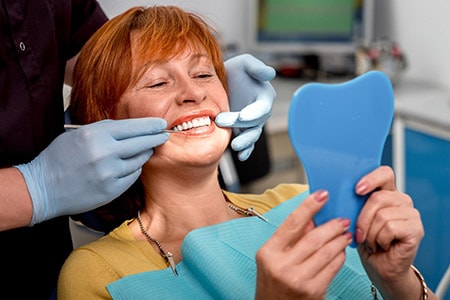Dental bone grafts help patients in San Bruno receive dental implants

If you have experienced bone resorption or atrophy, you may not think they are good candidates for dental implants. Gum disease, injury or tooth extraction can permanently impact the volume of the jawbone and leave the area unable to support a dental implant. Luckily, there are still options. Bone grafts give patients with bone loss the necessary height, depth, and width of the jawbone in order to support implants and replace missing teeth.
What is a bone graft?
A bone graft fills in holes or defects in the bone as well as increases the height or width in order to improve volume and stability. The two main reasons for bone grafts are jaw stabilization and preservation.
The different types of bone grafts
There are a few different types of bone grafts. During your oral examinations, we will determine which one is best for you.
- Autogenous – This type of bone graft uses bone from your own body (usually the lower jaw or chin). This is the most common type of bone graft.
- Allograft – This type of bone graft uses bone from a donor such as a cadaver or synthetic bone.
- Xenograft – This type of graft utilizes bone from a different species such as a cow.
The bone graft procedure
The bone grafting process begins with a thorough oral examination. During this appointment, we will assess the health of the teeth and gums. Any decay or periodontal disease will need to be addressed before receiving bone grafts. We will take a series of x-rays to obtain dimensions of the bone and determine how much is required during the graft.
The grafting procedure itself can take several months. We will have to harvest bone from your body (or a bone bank) and add it to the current bone. Over time, the two bones will fuse and spur cell growth.
Share this Article
Back to Block/Bone Grafting Page



